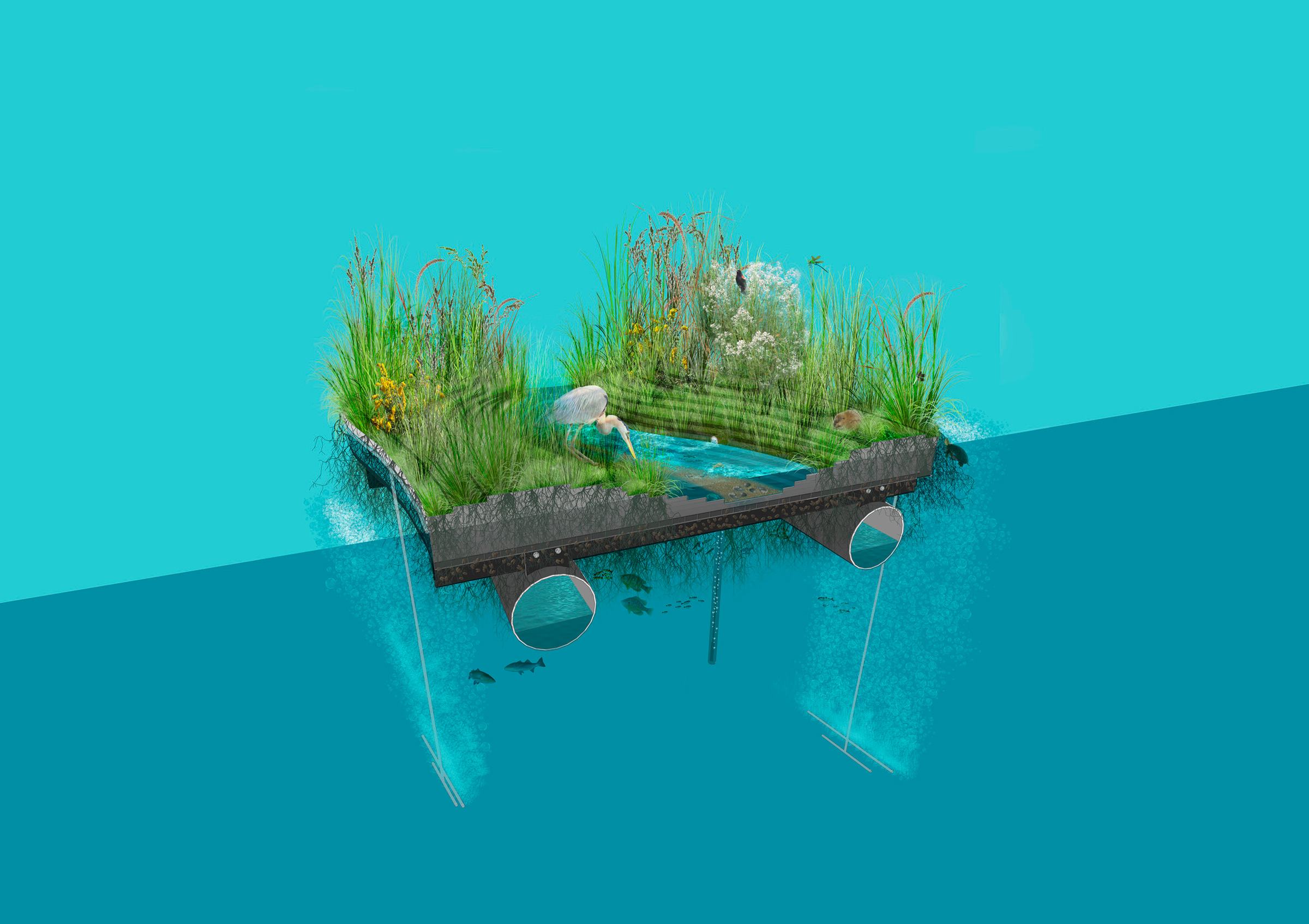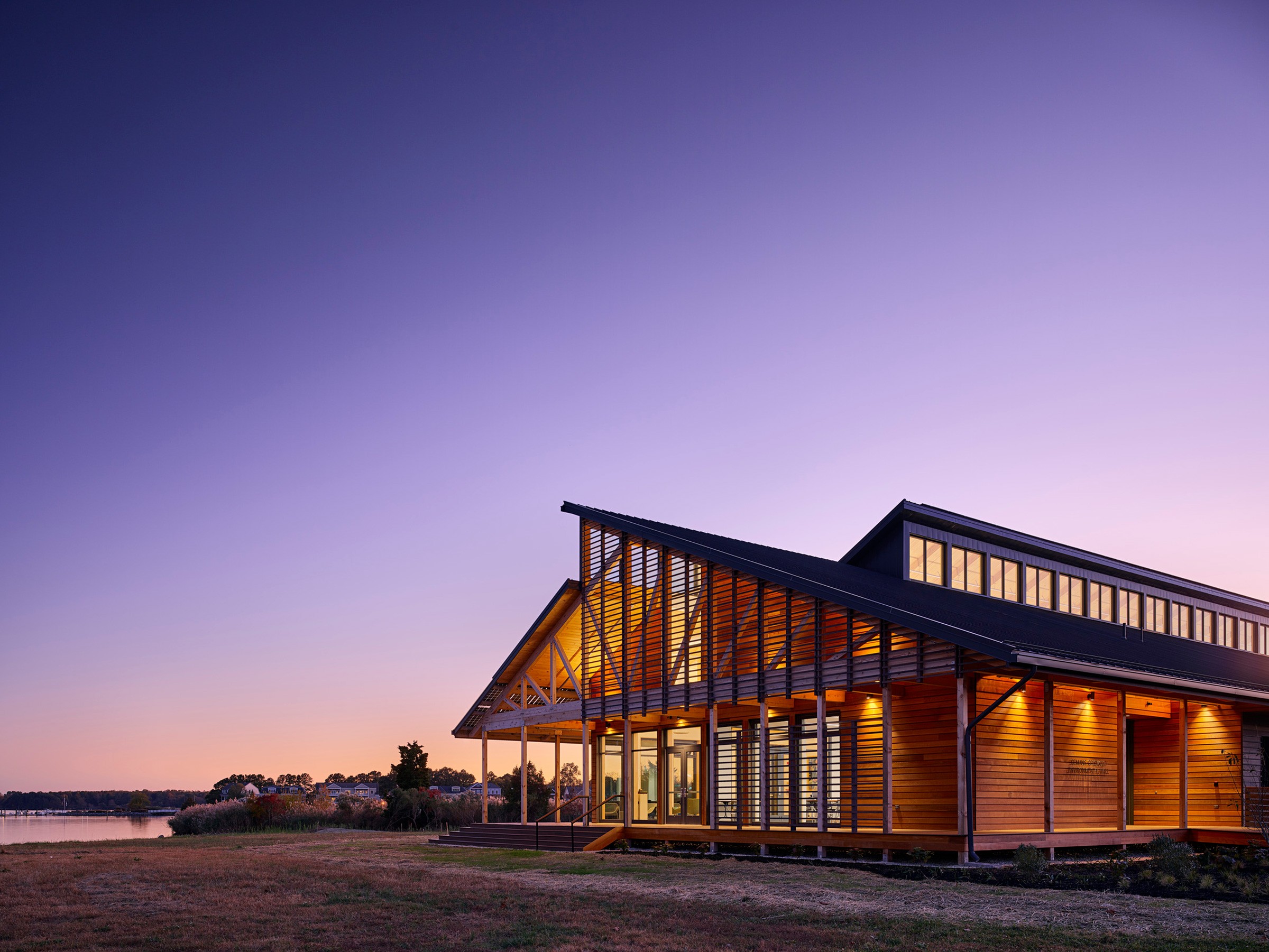This site uses cookies – More Information.
Floating Wetland Prototype

The National Aquarium has an ambitious mission to inspire conservation of the world’s aquatic treasures. With a prime location in Baltimore’s Inner Harbor and a goal of transforming their campus into a living lab, the aquarium sought to produce a sustainable and high-performing floating wetland to support the revitalization of the Chesapeake Bay. Buoyed by a team of multidisciplinary scientists and engineers, Ayers Saint Gross worked with the National Aquarium to develop a new kind of prototype, committed to water quality, habitat diversity, and resiliency within an urban aquatic environment. The wetland system is self-supportive; every square inch of this ecological powerhouse provides a diverse range of organisms to grow, colonize, molt, spawn, or eat.

Over the past decade, the concept of floating wetlands has gained traction in areas where native habitats have severely deteriorated. Floating wetlands provide an innovative opportunity to reintroduce native species back into urban aquatic habitats. Previous iterations have not been long-lasting and only offered a limited variety of habitat conditions, this new prototype is designed to address longevity and diversity of habitat.

The design criteria for an optimal salt marsh habitat was evaluated and heavily researched, and several major technical challenges including topography, buoyancy, and longevity were studied. A topography model and planting plan were developed with native Chesapeake Bay species and varied planting surfaces at different levels to create a diversity of habitats.


Conventional floating wetlands have what is called static buoyancy from integrated marine foam, which means they won’t sink easily. The Ayers Saint Gross design adds a rigid support structure for adjustable buoyancy. This “skeleton” is made of high-density polyethylene pipes and pontoon structures that provide the wetland with ballast. This adjustable buoyancy is essential to longevity.

The 200 SF prototype was shop-fabricated, transported in pieces, and then assembled in a shipyard on the Middle Branch River before being towed to its current position in the Inner Harbor in August 2017. Aquarium staff then planted it with more than 1,400 plugs of native plants.

Quickly after implementation, scientists at the National Aquarium found a diversity of biofilms and species attracted to the floating wetland. The presence of biofilms is the first step in reaching biodiversity of larger species and a more complete localized species web.
For more information on this project, please read this article.
2018
McLaren Engineers – Marine/Civil/Structural Engineering
Kovacs, Whitney & Associates - MEP Engineering
Studio Gang – EcoSlip concept
